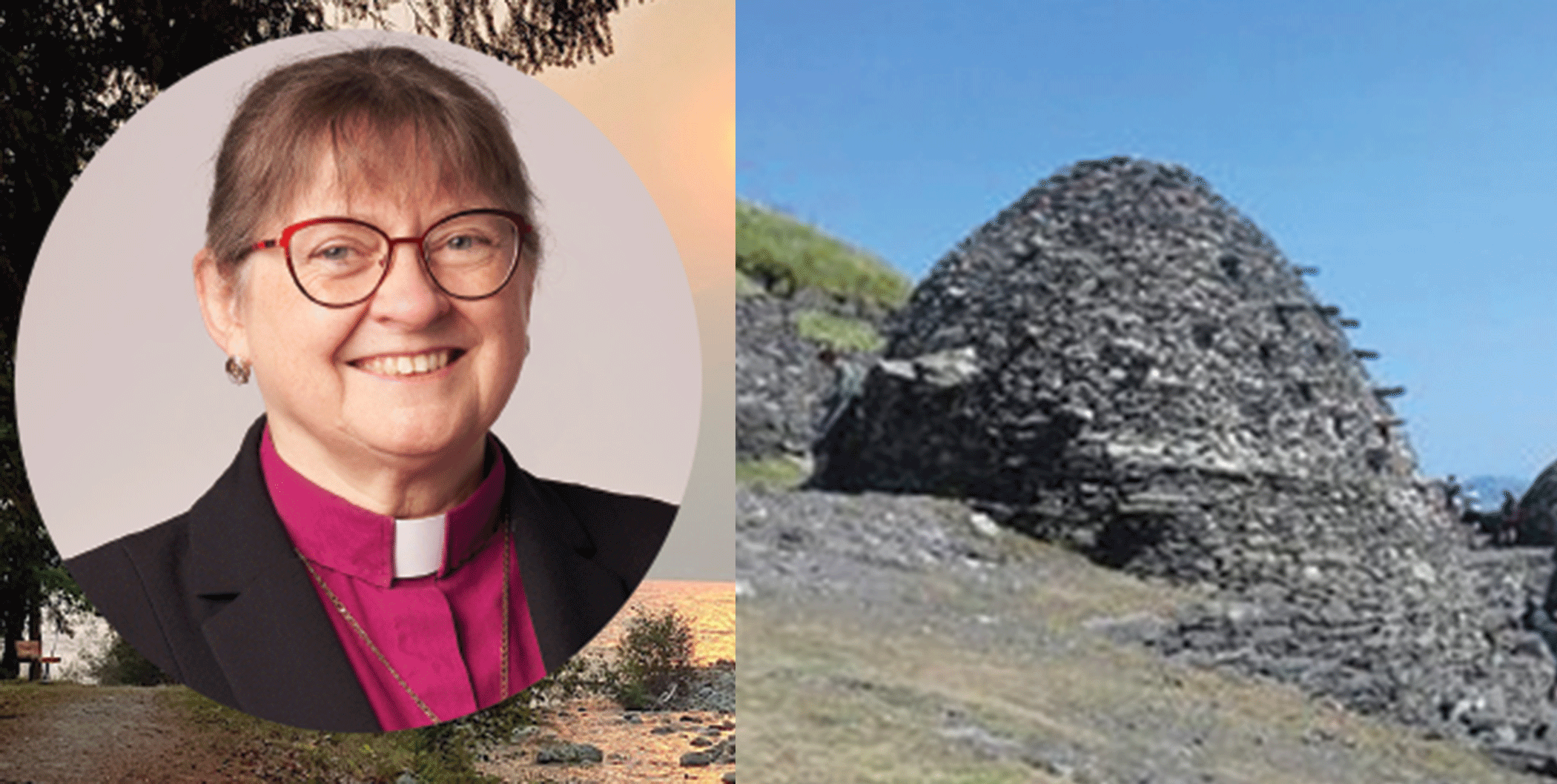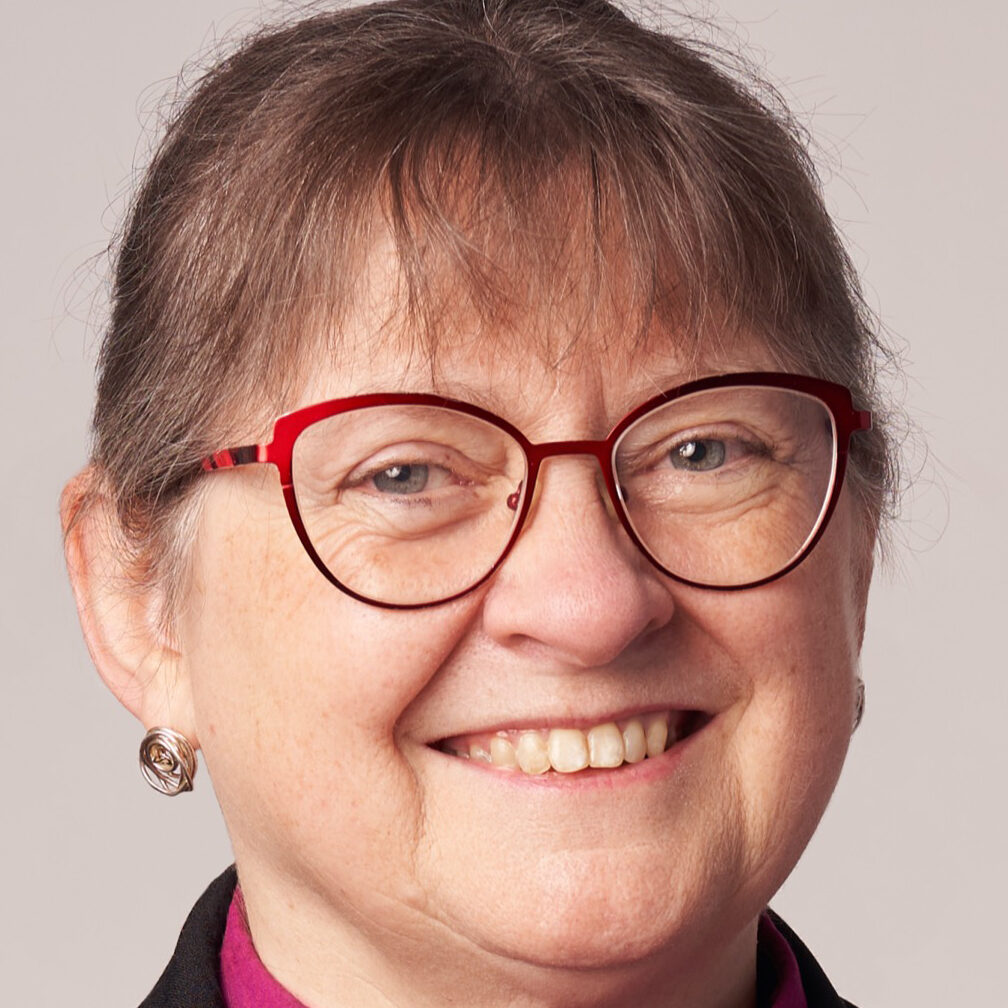Bishop’s Reflection
For twenty years, as I had the privilege of leading pilgrimages in Europe, experiencing our spiritual history, I visited and studied many ancient Celtic monasteries, and Christian communities in Scotland, Wales, Ireland, and Brittany. Before the Roman system of the diocesan structure took root in these countries in the 12 century, early Christianity (5th to 11th centuries) was formed around small simple monastic communities.
Our Diocesan Council in October approved a report from the Structures Working Group that suggests several possible ways to organize local missions in the diocese instead of the current parish model (one priest in one local community), which is no longer sustainable and functional in some places in our diocese. One suggestion is that we use a “Minster” model. (The word “Minister” is the name for a church connected with a monastery, such as Yorkminster, Westminster, etc.) I thought I would write about this old Celtic model to stir our imaginations about how we might structure a minster community in our own time.
When Christianity first arrived Celtic lands were very rural: no cities or towns. Celtic monastic life was not the highly structured European model we might think of if we had been to a Benedictine Abbey. Celtic monasteries were small rural communities loosely organized around a centre of worship. Some church buildings measured only 12 feet by 9 feet – these were small! Monks and nuns might have had small cells to sleep in or eat in, certainly not dormitories or dining halls. In those early centuries, there was no wide gulf between monks and ordinary folk. The communal values of Celtic society were based on a clan system, with close kinship and tribal ties, upheld in the organization of monastic communities. In reality, one cannot speak of a Celtic Church as there was not much ecclesiastical organization.1 Celtic ministers were called “Colonies of Heaven,”2 places where people could live out their discipleship of Jesus and practice the Kingdom of God.
Communities and places of worship were mostly temporary to begin with. There were few settled places; wandering monks and pilgrims were predominant. At first, monastic communities were built in very remote places, often islands, for solitude and seclusion, imitating the Desert Fathers and Mothers of the fourth century, but over time theology changed, “Ministry” was for the world; monastic communities were called to live at the crossroads of life, not away from but in the midst of the world. A small monastery might grow up eventually around a hermit’s cell, disciples wanting to learn from a wise person of prayer, and expand over time to include schools, hospitals, hotels, and retreat centres. Some monasteries grew into towns and were centres for the arts. Scholarship and libraries were highly valued. By the 11th Century, Clonmacnoise and Glendalough, the largest monasteries, had grown to towns of 1000 people.
Monastic vows could be taken by both men and women, married or celibate. Vows might not have always been life long, but for a certain period of time. At different times in their lives, those who took religious vows moved between periods of community life and periods of solitude. Women were often the head of mixed monasteries. The monastic life consisted of community prayer several times a day, chanting psalms, personal prayer and study, and manual labour for the community such as work in the fields, fishing, hunting, collecting nuts, or copying manuscripts. Hospitality to pilgrims and care for the sick and those in need in the wider community was part of the shared communal life.
The key thing about a “Minster” then is a collaborative community of people who share a “rule of life,” prayer and worship, working at a livelihood, as well as a mission of care for people in need. “Ministry” is shared with a group of people. The life of a disciple, the life of faith, and leadership in the community is not an individualistic endeavor.
I imagine a “Minster” hub, as shared leadership of priests, deacons, lay leaders, not the individual priest working alone as happens in our current parish model.
The “Green Abbey” model we envisioned in the Diocese in 2021 was based on a “Minster” model, a group of people living together to run a farm, with communal prayer, worship, and study life, a hub that offered sacramental care to outlying areas. At the time, the opportunity, people and resources did not come together for this particular plan, but the dream was a good one and has not died. We learned more of what would be needed to make that dream a future reality.
Although there is much I admire about ancient Celtic Christianity, such as their reverence for nature and the holiness of ordinary life, I also don’t want to romanticize this ancient monastic model. It was often hierarchical and connected too much with tribal kings, nobility often taking the leadership roles, with huge emphasis on obedience to the abbot or abbess that simply wouldn’t work in our more egalitarian society. (Also, the tribal rivalry was such that Irish monasteries sometimes went to war with other tribal monasteries – we don’t want to carry that into a contemporary model!) Celtic monasticism, influenced by the early Desert Fathers and Mothers, also practiced severe asceticism, although what looks to us like a harsh overly disciplined life. The meagre diet called for in the rule of life may not in fact have been very different from the life of a poor peasant farmer.
In our society where isolation and loneliness are major social problems the communal aspect of a “Minster” is appealing. If you were to imagine a “Minster” model today, what would you want to see? What do you need in your Christian community in order to practise your faith? What would a contemporary “colony of heaven” look like?
Bibliography:
Adam, David. A Desert in the Ocean: God’s Call to Adventurous Living. London: Society for Promoting Christian Knowledge, 2000.
Bradley, Ian. Celtic Christian Communities. Northstone Publishing, 2000.
O’Loughlin, Thomas. Journies on the Edges: The Celtic Tradition. New York: Orbis, 2000.
Hobbs, Gerald and Lynne McNaughton. From Brú Na Bóinne to Corrymeela: The Celtic Experience in Ireland. Study Guide for Pilgrimage 2015.
(Endnotes)
1 Bradley, Ian. The Celtic Way. London: Darton, Longman, and Todd, Ltd. 1993. P. 70
2 Bradley, Ian Celtic Christian Communities. Northstone Publishing, 2000. p. 3


